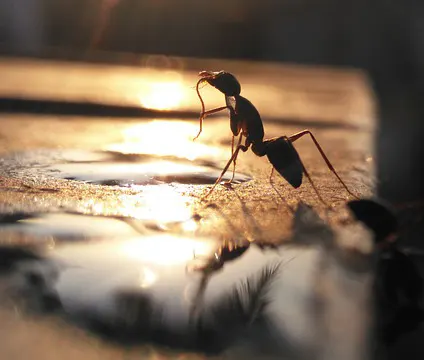How Ants Survive the Rain
Digging Deep
Ants Can Predict the Rain
Ants are sensitive to environmental changes, this sensitivity includes changes in humidity, temperature, and air pressure.
Ants cannot predict the rain literally, but they can detect the changes in humidity and air pressure that usually precede rain. For instance, ants may close the entrances to their nests, cover food, or move their colonies to higher ground.
Ant Hills: A Natural Flood Prevention System

Ants Create Rafts
Fire ants take things a step further and work together as a community to survive floods.
When a colony of fire ants encounters a flood of rain, they cling together and create a raft on the surface of the water. This allows at least some of them to survive even the most intense floods.
Ants Can Walk on Water
Ants are too light to break the surface tension of the water, which means they can actually walk on water.
This ability to stay on the surface of water is due to the shape of the ant’s body, which is designed to distribute its weight over a larger area.

Ants Move Inside
A Stanford study found that household ant infestations in the San Francisco Bay Area were worse during the rainy season than they were in the dry season. Like most creatures, ants are motivated by weather and food. When their natural habitat is underwater or destroyed, your house looks like the promised land.
Many species of ants are attracted to food and water that are more readily available indoors, such as spills, crumbs, and leaky pipes. In these cases, ants may move indoors to avoid the rain, but rather to take advantage of the resources.
Have a Problem with Ants in Your Home? Call Killroy!
Do Ants Hibernate? Not exactly.
Ants do not hibernate in the traditional sense. They have a mechanism called diapause that allows them to survive the cold. Diapause is a state of dormancy that allows insects to survive during periods of unfavorable weather or food scarcity.
During diapause, ants slow down their metabolic activity, which can make them more resistant to environmental stressors such as temperature changes and lack of food.


